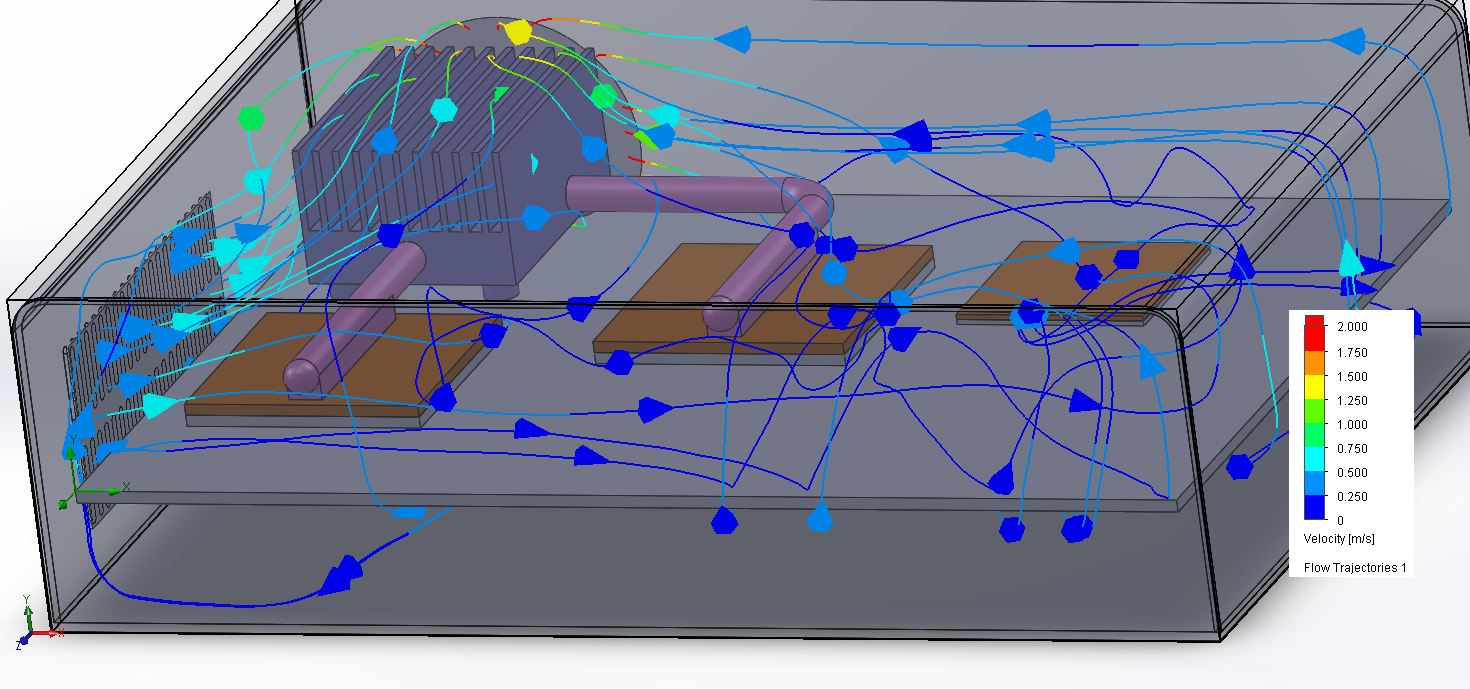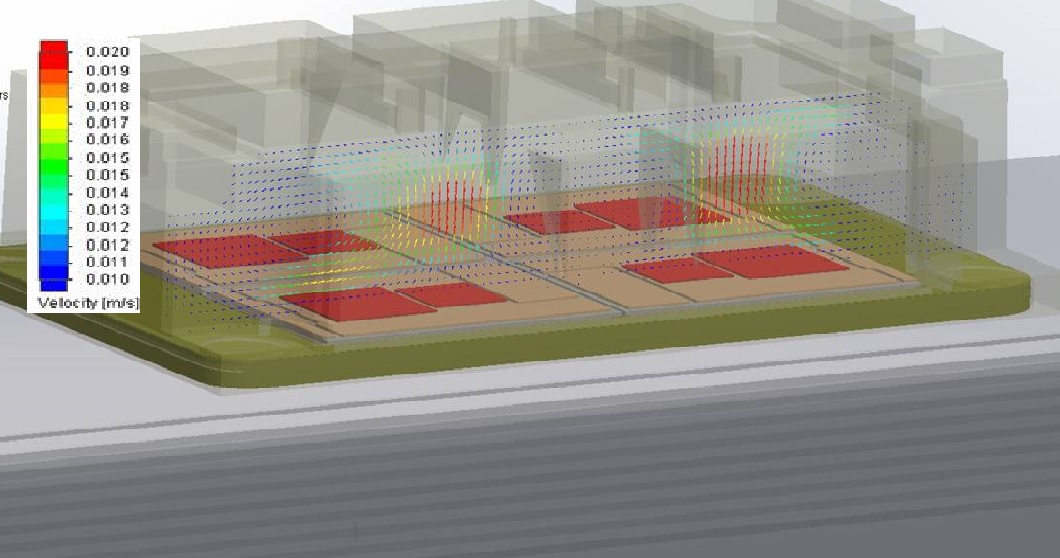Computational Fluid Dynamics solves fluid and thermal problems three-dimensionally with numerical methods. The full fluid and temperature field can be precisely analyzed through the visualization of 2D cut plots and streamlines. The speeds, local pressures and temperatures can be averaged for defined volumes. The heat transfer coefficients can be obtained for any defined surface. Thanks to CFD you can expect more precise results and a deeper understanding of the flow structures, which will help future developments. If CFD is associated with the project throughout the concept and the design phases, easy-to-execute optimizations, as well as innovative solutions can be acknowledged at an early stage. The number of expensive tests can be reduced as well as the time required for market entry. However, CFD remains an approximation of reality: it cannot fully replace tests and measurements.

The aerodynamics of a gas turbine should be calculated with CFD like the cooling of the electronics of AC and DC charging stations for electromobility;
however, the quality expectations and the budget differ significantly. The CFD engineer is
committed to sticking to the time and cost requirements and accordingly, to
proposing the necessary simplifications. The difficulty of the project and the
corresponding costs depend on the chosen CFD methods and the degree of precision required.
The calculation can usually be run on regular high-performance PCs, but for large models, the use of a computer cluster might
be necessary. Engineers usually work in the company office or in the home
office on a regular notebook and they share servers on the cloud where the
computationally intensive CAD, CAE and CFD software are installed. The hiring of qualified employees and the buying or
renting of necessary hardware and software is expensive and takes some time.
If the needs are only irregular, it is best practice either to partly or
entirely outsource the CFD process to a specialized calculation group or an engineering consulting company.

| Electronics cooling | Cooling of Motors for E Mobility |
| Solar heating | Cooling of large Generators |
| Brake design | Power electronics cooling |
| Oil cooler design | Cooling of electrical cabinets |
| Battery cooling | Ventilating and Air Conditioning |
| Heat sinks | Heat exchanger efficiency |
| Defrosting of windshield | Power plant cooling tower |
| Engine cooling jackets | Cooling of injection molding devices |